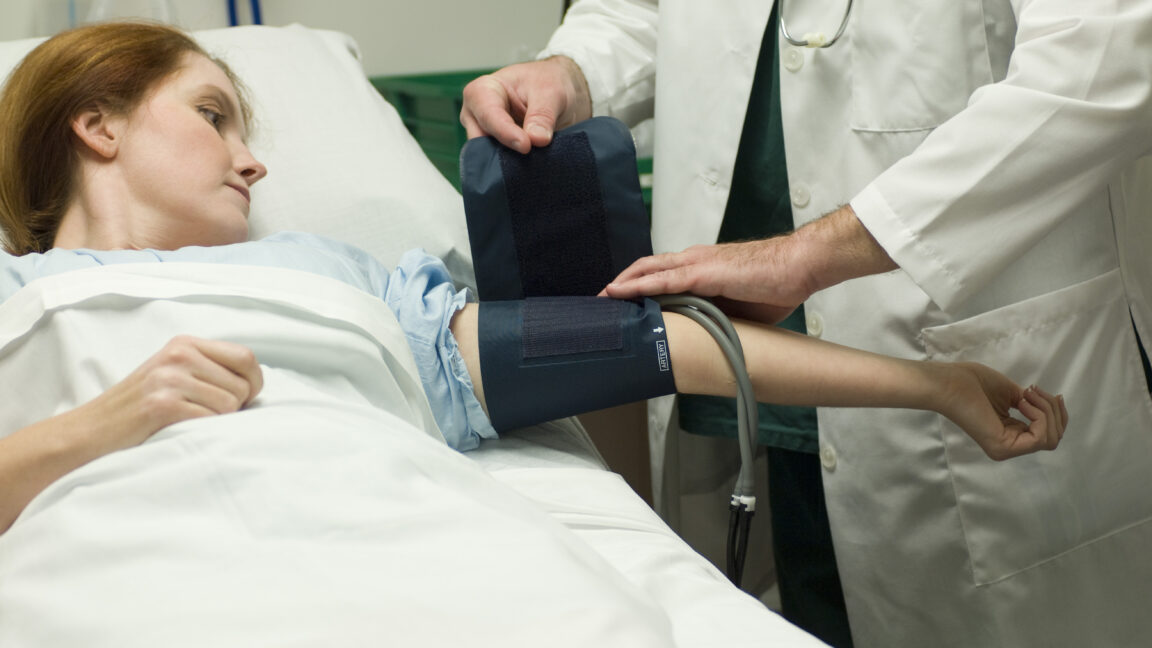ARSTECHNICA.COM
For real, we may be taking blood pressure readings all wrong
BP MVP For real, we may be taking blood pressure readings all wrong Blood pressure readings while lying down beat seated readings at predicting heart risks. Beth Mole Jan 24, 2025 11:43 am | 25 Credit: Getty | PhotoAlto/Michele Constantini Credit: Getty | PhotoAlto/Michele Constantini Story textSizeSmallStandardLargeWidth *StandardWideLinksStandardOrange* Subscribers only Learn moreLast year, a study highlighted that your doctor's office might be taking your blood pressure wrong. The current best practice is to take seated blood pressure readings with a detailed protocol: Patients must not eat, drink, or exercise for 30 minutes prior; they must have an empty bladder and sit calmly for five minutes prior to the first reading; they must sit with their feet uncrossed and flat on the floor; their back should be supported; anda big one that's often overlookedthey must keep the arm to be measured resting on a flat surface at the height of their heart, not higher or lower.While the setup is often different from what happens in a bustling medical office, a new study blows away quibbles over protocol and suggests that even when done perfectly, the method is second-rate. We shouldn't be sitting at all when we take our blood pressurewe should be lying down.According to the study, published in JAMA Cardiology and led by researchers at Harvard, blood pressure readings measured while lying down were significantly better at indicating risks of cardiovascular disease, stroke, heart failure, and death than were seated blood pressure readings alone.For instance, people who had high blood pressure readings while lying down but not while seated had an estimated 53 percent higher relative risk of coronary heart disease than people with normal blood pressure. They had a 51 percent higher risk of heart failure, a 62 percent higher risk of stroke, a 78 percent higher risk of fatal coronary heart disease, and a 34 percent higher risk of all-cause mortality.For people who had high blood pressure readings only when sitting (normal readings while lying down), there was no statistically significant difference in risk of coronary heart disease, heart failure, or stroke compared to people with normal blood pressure. The only statistically significant differences were a 41 percent higher risk of fatal coronary heart disease (compared to the 78 percent seen in those with high readings lying down) and an 11 percent higher risk of all-cause mortality.(In this study, high blood pressure readings were defined for both positions as those with systolic readings (the top number) of 130 mm Hg or greater or diastolic readings (the bottom number) of 80 mm Hg or greater.)The people with the highest risks across the board were those who had high blood pressure readings while both sitting and lying down."These findings suggest that measuring supine [lying down] BP may be useful for identifying elevated BP and latent CVD risk," the researchers conclude.Strengths and hypothesesFor now, the findings should be considered preliminary. Such an analysis and finding should be repeated with a different group of people to confirm the link. And as to the bigger question of whether using medication to lower supine blood pressure (rather than seated blood pressure) is more effective at reducing risk, it's likely that clinical trials will be necessary.Still, the analysis had some notable strengths that make the findings attention-worthy. The study's size and design are robust. Researchers tapped into data from the Atherosclerosis Risk in Communities (ARIC) study, a study established in 1987 with middle-aged people living in one of four US communities (Forsyth County, North Carolina; Jackson, Mississippi; suburban Minneapolis, Minnesota; and Washington County, Maryland).This study included data from 11,369 ARIC participants, mostly White and Black, and as such, the results are considered generalizable to a broad population. ARIC study staff underwent rigorous training to conduct the study. Measurements were highly standardized, researchers had extensive health information and data on the participants, and the data included more than three decades of follow-up.The findings also jibe with previous studies finding that high blood pressure readings during nightly sleep (when people are generally lying down) are also strongly linked to higher cardiovascular risks. Normally, blood pressure naturally drops during sleep, but those who maintain a higher pressure face substantial risk. While the ARIC study did not include blood pressure readings during sleep, it's hypothesized that the lying-down position may be a factor in the associated risks of nocturnal high blood pressure.As for why lying-down blood pressure may be more telling than sitting pressure, researchers only have hypotheses. It could be that lying-down readings are a more precise assessment of true resting blood pressure, which is what seated readings try to ascertain (hence the detailed protocol). It could be that the bodily mechanisms causing high blood pressure while lying down are more directly linked to cardiovascular outcomes. Or maybe high blood pressure while lying down is simply harder on the heart and brain than it is when upright.Researchers will need more data to clarify the role of lying-down blood pressure readings in estimating cardiovascular risks. But for those with blood pressure monitors at home, it might not be a terrible idea to see how your readings compare between sitting and lying down. The authors note that in the ARIC study, lying-down readings were done after a 20-minute rest period in that position. Readings were taken up to 5 times every 20 to 30 seconds over the course of two minutes. The researchers note that future studies evaluating the use of lying-down measurement in medical appointments should look to see if shorter rest periods would also work.Beth MoleSenior Health ReporterBeth MoleSenior Health Reporter Beth is Ars Technicas Senior Health Reporter. Beth has a Ph.D. in microbiology from the University of North Carolina at Chapel Hill and attended the Science Communication program at the University of California, Santa Cruz. She specializes in covering infectious diseases, public health, and microbes. 25 Comments
